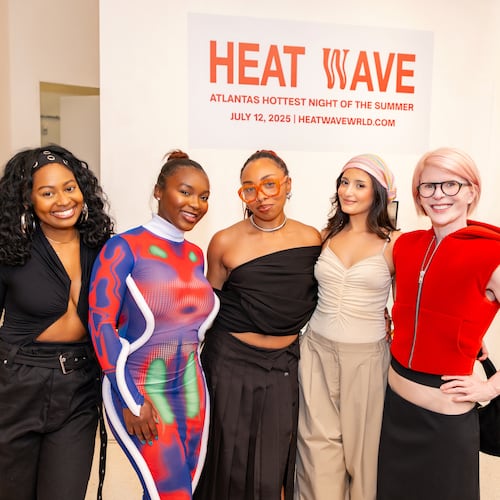Not long after Christine King Farris’ “My Brother Martin” was published, Collette Hopkins took a small group of kids to tour his birth home on Auburn Avenue, a house that was virtually a character in the 2003 children’s book.
The rooms of the quaint 1894 Queen Anne-style two-story, open to the public for tours by the National Park Service, were roped off. But Hopkins tried to bring the residence to life, citing anecdotes from Farris’ book that filled gaps in the ranger’s story.
“The kids were saying, ‘I wish I could go in and touch it,’ ” recalls Hopkins, the National Black Arts Festival director of education and family programs. “And I said, ‘If I built it, you could.’ Then I said, ‘You know what? I’m going to build a playhouse just like this.’ ”
This weekend, the child-size replica of the King Birth Home is debuting at the NBAF Children’s Education Village at the Woodruff Arts Center. And there’s no part that’s off limits. Camps and other groups were the first to check it out Friday, and it’s open to all visitors Saturday and Sunday at no charge.
The replica was built at two-thirds scale by Spelman College associate professor of drama and dance Paul Thomason and his scenic design crew of Spelman and Morehouse College students. And there’s only room for two or three kids inside at a time, since the home has been reduced to an entry parlor and a living room.
The small physical size stands in direct contrast to the huge King presence that organizers hope will resonate for visitors.
“We did a lot of pre-testing with kids on this project, asking them, ‘What do you know about the Rev. Martin Luther King Jr.?’ ” Hopkins says. “They knew very little.”
Extending the teaching beyond the yellow house with dark brown trim will be 12 learning stations in the form of key icons in King’s life, such as the Edmund Pettus Bridge in Selma, Ala. Each station offers two hands-on activities, such as making an origami peace dove.
Youth “griots” will tell of key dates in King’s life and quiz kids to make sure they get it. And visitors will take home a free copy of “My Brother Martin.”
In that book and last year’s memoir, “Though It All: Reflections on My Life, My Family and My Faith,” Farris recalls the Auburn Avenue residence where “M.L.” lived from 1929 to 1941 as a loving backdrop for the typical high jinks of middle-class youth. “I don’t want people to paint him as some kind of icon,” she told the AJC in January, speaking of visitors to the King Birth Home, which drew 62,000 in 2008. “He was a typical child and he had a normal, typical boyhood.”
But in other respects, life at 501 Auburn Ave. was hardly typical. Their father, Martin Luther King Sr. (“Daddy King”) was a minister and an activist, hosting in the parlor meetings to push for equal salaries for black and white teachers and to organize voter registration drives.
Spelman’s Thomason said he was “overwhelmed” when he took the Birth Home tour in preparation for producing the replica. “The only question in my mind is why anyone in Atlanta, black or white, hasn’t taken the tour?” he says. “It shouldn’t be just all those tourists.”
The NBAF is developing connected classroom curriculum on King’s life for students from pre-K to 12th grade, a teacher training program and a Web site.
“We want students to be inspired by King’s words,” says John McCall, a science teacher at Atlanta’s Maynard Jackson High School, who wrote the 12th grade curriculum. “We want them to become trailblazers of their own time, to come up with their own philosophy and have their own dreams.”
Children’s Education Village at National Black Arts Festival
10 a.m.-4 p.m. today, noon- 5 p.m. Sunday. Woodruff Arts Center, 1280 Peachtree St. N.E. Free. www.nbaf.org.
King Birth Home tours: Hourly in summer, 9:30 a.m.-5:30 p.m. daily. Free. Reservations required (in person). MLK National Historic Site Visitor Center, 450 Auburn Ave., 404-331-5190, www.nps.gov/malu.
About the Author
Keep Reading
The Latest
Featured
